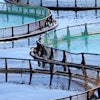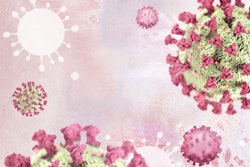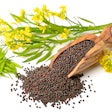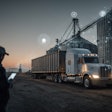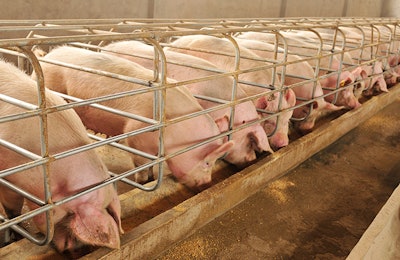
Agriculture and Agri-Food Canada research scientists Candido Pomar and Aline Remus discuss precision feeding and nutrition for the swine industry.
PODCAST: Using precision feeding to improve pig production (21:17)
Ann Reus: Hello and welcome to the Feed Strategy podcast. I’m your host, Feed Strategy staff reporter Ann Reus.
Today, I’m talking about precision feeding with Candido Pomar and Aline Remus, both research scientists at Agriculture and Agri-Food Canada.
Candido Pomar pioneered the development of an innovative precision feeding and farming approach which will enhance profitability and durability of the swine industry. He has a large network of national and international collaboration and has contributed to training many graduate students.
Aline Remus has worked for the past nine years on developing precision feeding and nutrition for precision livestock farming. She makes it her mission to give voice to the outliers by studying the variability in protein and energy metabolism of growing-finishing pigs.
Together, Pomar and Remus have been awarded with Agriculture and Agri-Food Canada’s 2020-21 Prize for Outstanding Achievement in Science. This award recognizes the significant contributions of scientists to Canada’s agriculture and agrifood sector.
Candido, can you start by describing precision feeding?
Candido Pomar: Yeah, precision feeding is a new way of feeding animals. And the reason of developing this idea of precision feeding, we should say, individual precision feeding, because what we are trying to do with this technique is to feed pigs individually, because not all the pigs in our herd, they have the same the same needs. So actually, we are providing the animals with the same feed for during long periods of time. And the same feed is assumed that it provides the requirements of the individuals, but the individuals are very different, there are pigs that are leaner than other ones, and some pigs are growing faster than another, one’s eating more. So, what we are doing with this precision feeding is we try to see how each pig is eating, how each pig is growing. And according to what the pig is doing, we then decide each day, what is the optimal amount of nutrients that has to be provided to this animal in order to improve the efficiency of the of the nutrient intake. So that’s the idea.
So sometimes I give the example, assume that because this the animals are, are like teenagers. Assume that you are in a school with the with teenagers, you have only the ability to make only one plate, only one dish, the same size for all the students. So how you decide what is the right size, or the right amount of feed to provide to all the students when there are students that are physically much more active than another ones. And others that are growing faster than another one. So it’s very difficult. So what you are going to do in practical conditions is you are going to produce a dish that contains a lot of food to be sure that all receive at least the amount they need. But for most of the of the students, you are going to be losing a lot of feed because they don’t need all that. So with animals, we are in the same situation. We have to feed to ensure that all are growing up to their potential. We are producing feeds that provide much more nutrients than most of the pigs need. So, precision feeding, the nice thing is we follow what each animal is doing. And then, according to what he’s doing, how he’s growing, how he is eating, then we estimate the optimal requirements. And then we feed the animals according to that.
Reus: Why should producers implement precision feeding? Can it do things like improve feed conversion, feed input costs or growth rate of the animals?
Pomar: Yeah, good, that is a very nice question because we are not changing feed conversion, because that’s not the issue. What we are changing is nutrient conversion. That’s the big issue. Because the animals are still eating the same amount of feed, but they just, it’s the concentration of nutrients that we are providing to the animals that is changing. So in terms of nutrients, we actually, with precision feeding when we are feeling each pig with the right amount of nutrients, we are producing the same amount of meat with 25% less nutrients, that’s the good advantage. So, less nutrients, less protein, that means also that you are reducing the excretion of nitrogen and phosphorus and other nutrients. So actually, we are able to reduce nitrogen excretion by near 50%. So feeding pigs individually according to the requirements will allow us just to use less protein, less nutrients, and also excrete less nitrogen and less phosphorus. So we are talking about an important reduction. And with this reduction is because protein is an expensive nutrient, phosphorus is also expensive, even if it’s not the most expensive one, but maybe we should be expecting reductions of about between 8 and 12% in feeding costs, because we are reducing the cost we are using less protein than in conventional feeding systems.
Reus: Can precision feeding lead to better health and nutrition outcomes?
Pomar: Nutritional outcomes – yes, yes, absolutely. Because we are feeding animals according to the what they need. So they are more efficient in terms of converting energy. So there’s these animals when they’re fed according to the individual requirements, then they convert the energy a little bit better than the conventional ones. So they are they are better.
In terms of health, there is no changes per se, but the nice thing with precision feeding is that we know what each pig is doing. And we know that when a pig is getting sick, he changes the way that he’s eating. So the first thing that happened when we are saying what has happened is the same thing with humans, when we are starting a start to be sick, before we reduce the amount of food, we reduce the way we are eating, that’s what we are observing things. So we know everything that’s happening in the farm. So just monitoring how the pigs are eating, we can very quickly identify whether there’s a problem in the farm, when there’s a problem, maybe at the individual level, if the animal is sick, or even a problem in terms of environmental conditions, but then all the pigs are changing. So we know how the pigs are eating. And when there is a change, we can quickly say something is happening there. So the potential of precision feeding to quickly identify diseases is very hard. And eventually, some people say that precision feeding can help to reduce the use of antibiotics, because we are going to be able to identify from the very beginning any disease in the in the farm. And then the intervention is going to be quick and we’re going to be able to address intervention to each pig individually, instead of like now, when we see disease on the farm is when we know most of the pigs are already affected. And then the treatments cannot be applied individually or you have to apply the antibiotics or any treatment to globally. In the precision feeding area, we are going to be able to individually identify when it’s a problem and make the intervention for an individual level. So there’s big potential to improve health, animal health, and particularly the reduction of antibiotics.
Reus: Aline, can you tell me how precision feeding improves sustainability of the operations that apply it?
Remus: Sure. For starter, maybe I’ll give a little definition of sustainability because it can be seen in different ways. So, when we normally say that precision feeding and nutrition improve sustainability, we’re talking from the environmental angle, we’re talking from the social angle into the animal angle. This because once we use precision feeding in nutrition, when we formulate the diets for the animals, we can feed them on daily tailored diets, which means that we are feeding them closer to their actual requirements. And this approach to nutrient efficiency or optimization. By doing that we decrease the environmental excretion of nutrients such as nitrogen and phosphorus. And we talk in reductions that range from 30 to 50%, which not only increases the environmental factor as it is, as we can start to talk instead of formulating diets for maximum growth, but we can start talking about formulating diets for maximum nutrient efficiency and optimization.
In a further goal, this means that we can look for nutrients or better ingredients that are not competing with humans. So, we can use feedstuff that is a byproduct of human food, for example. And, as well, as Candido has said, precision feeding might be able to allow us to do early disease detection. So, by studying the pig feeding pattern deviation, so how he changes the amount that he is eating, but as well, when he deviates on an optimal feed intake pattern, we can probably spot a disease two to three days before a clinical sign can be observed. This means that we can actually direct our resources to take care of the animals that actually need that attention. These animals can be isolated before the diseases spread to the other animals in the pen, which allows us to do target treatment, decreasing probably they use of antibiotics in others, but also the resources on the farm, right, because we are actually directing our energy to the animals that need that.
Additionally, when we automatize a process such as feeding animals, we can free some time for the producer, this time that he is actually not feeding the animals he has time to actually follow the animals more closely, he can give more attention to these animals. Other than that, if we think not only from the welfare point of the animals from the health side, is also if we do early disease detection, and we are closely following these animals, we decrease the spread of zoonoses, and so on.
Further on that, we can think that these technologies will allow us to create or modify the farm job as we see today. And we might be increasing the interest of the young ones to come to work on the farm, which has been a very big problem lately, the manpower to work on the farms. So maybe this type of technology can help us to keep young people in farms and also change a little bit the way that their farm work is done.
Reus: Yeah, that all sounds great. Can you tell me about some of the latest research you’ve been working on?
Remus: So, lately we have been focusing on understanding animal viability. And this is important because we normally assume that the animal growth varies greatly among genetic types. But we forget that actually animals with the same genetic background, coming from the same farm with similar bodyweight, they vary greatly in their growth rate, meaning that animals that received the same diet that have even sometimes from the same litter, as we know, they will have very different growth rates. And not only the average daily gain will be different. But the composition of the gain will be different. We have animals with a very high protein deposition with the same gain than animals that have a very low protein deposition. And we know that by the end, what counts is the protein conversion, we want lean gain mainly. So, by studying factors that affect protein deposition and lipid deposition in animals, we can better estimate requirements, and we can target individuals. So we can increase or decrease the growth rate and, ultimately, we might modulate the type of growth that we want.
We have worked by varying levels of amino acids and see what shows the types of proteins that we could vary in the growth, we also have worked on the glucose insulin metabolism of the animals. And in the future, I think we’ll be working a lot on feeding alternatives, so how we can use products that are not used in humans. But to do that, the first thing that we have to do is understand how animals that received the exact same diet, the exact same amount of nutrients use these nutrients differently. So once we have done that, we can move on and I think we will have a very bright future in animal nutrition.
Reus: Are there new innovations or technology that can be used in precision feeding?
Remus: Yeah, I think lately there is several developments around sensors and so on that help, I think, is a big boon. Many people are working with this area, there are technologies that are farther or closer to be in the field. But I think we should look at this from the perspective is what we need today to put precision feeding and nutrition in the field. And the nice thing is we need very little. We actually need feeders that can identify the animals, and they can provide daily tailored diets, which means that this feeder not only has to reduce the feed intake of these animals, but is also able to mix feeds to provide a complete diet to this animal. And these feeders, I think, are very close to seeing the light of day in the commercial scenario, are smart feeders that or feeding stations that can recognize pigs through RFID, that is radio frequency or any other technology will soon be available at very competitive prices. And another thing that we need, and I think people have done great progress on that, is we need to be able to reduce weight in real time. So, to make precision feeding in the field, we just need the feeding rate that can be registered by feeding stations. And the real time body weight. To do that, vision systems through the use of cameras have been developed. Actual security cameras, the same that are used for surveillance, they can actually estimate the body weight of the animals. There is still a long, long way to go. I don’t think there is commercial systems available on that yet, but I think there is several companies that are working on that. And soon we’ll probably see this type of technology available and it will be very useful for us in precision feeding.
Reus: So, with all of that research and innovation, how do you envision precision feeding being used in pig production in the future?
Remus: Precision feeding, as is the concept itself, is not one size fits all. So, I mean, precision feeding can be implemented in different feeding systems. I think the first thing that we see is going to be intensive farms, right, that is true automatic feeding station and scales or cameras will have the body weight of these animals and will daily tailor diets for each one of these animals. As we can also say this technology is being applied to less intensive system, as the organic systems. I think the organic system has a lot to gain of using precision feeding by the fact that we can actually tailor better the diets for the animals and that is a big struggle for this type of system. Precision feeding can be a big help there. So I see that precision feeding will be implemented in the different ways and it will be the producers, will be the market, will be the public that will determine the speed in which we’re going to move in this direction. But I do believe that it is a one-way road and we’re going to see it coming to the fields in the next five years or so.
Reus: Candido, do you have anything to add?
Pomar: Yes, I just I will maybe turn around the question is how we can in the future, if you look in 10 years, 20 years from now. I think all the precision feeding is going to be a normal thing. Sometimes I am thinking is, like now we are starting with the first tractors most of the people used horses or whatever animal to work in the in the farm. And now we are coming with the first tractors. Of course the first tractors may be a little bit expensive maybe or not so efficient. But they are going to come through because the technology is there and our ability to develop very efficient technology is getting there. And there is so much to gain adopting these feeding systems that I don’t think it’s any issue, we are going to be there, farmers are going to be there in the future because we are going to be able to produce much more or the same amount you want with much less nutrients and is going to be less expensive and animal Health is going to be improved. So there is too much to gain, just to say that this technology is not going to be adapted. And maybe the last comment is also we have to see precision feeding within a precision farming system is not just the feeding that it’s going to be more precise, it’s the overall system, precision system is meant to be improved by different technologies that are going to be developed.
Reus: Well this is all very fascinating. Thank you both so much for your insights.
Pomar: Thank you for giving us the opportunity. It’s very nice, and if there’s any question from your audience, we are going to be glad to answer them anytime.
Reus: OK, great.
Remus: Thank you for having us. It’s a pleasure. And yes, please just if anyone has questions can contact us and we’ll be happy to help.
Reus: And if you would like to learn more about precision feeding from Candido or Aline, you may contact them at [email protected] and [email protected].
Thanks for listening, and remember, you can subscribe to the Feed Strategy podcast and listen to past episodes wherever you get your podcasts.

